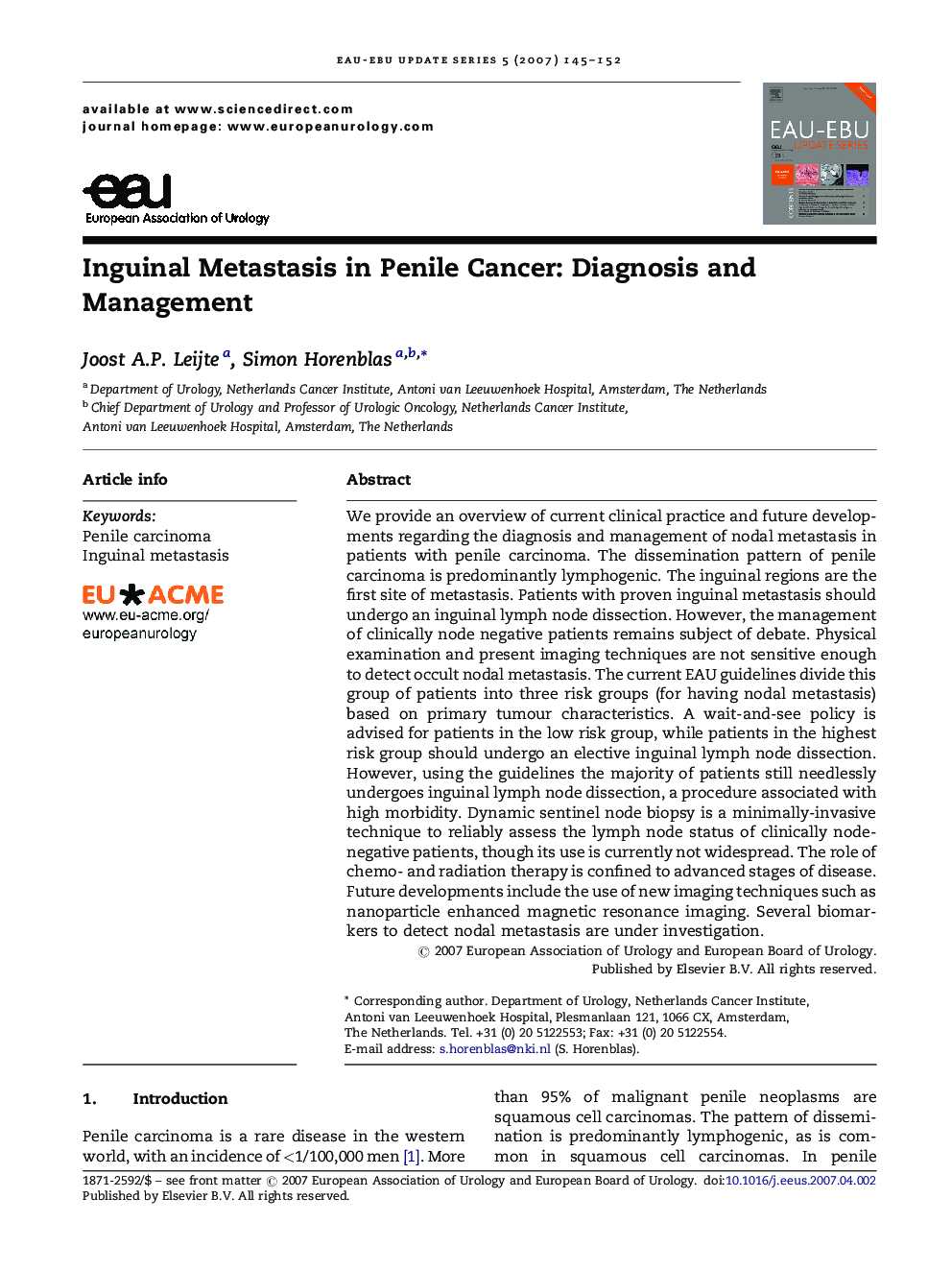| Article ID | Journal | Published Year | Pages | File Type |
|---|---|---|---|---|
| 3919071 | EAU-EBU Update Series | 2007 | 8 Pages |
We provide an overview of current clinical practice and future developments regarding the diagnosis and management of nodal metastasis in patients with penile carcinoma. The dissemination pattern of penile carcinoma is predominantly lymphogenic. The inguinal regions are the first site of metastasis. Patients with proven inguinal metastasis should undergo an inguinal lymph node dissection. However, the management of clinically node negative patients remains subject of debate. Physical examination and present imaging techniques are not sensitive enough to detect occult nodal metastasis. The current EAU guidelines divide this group of patients into three risk groups (for having nodal metastasis) based on primary tumour characteristics. A wait-and-see policy is advised for patients in the low risk group, while patients in the highest risk group should undergo an elective inguinal lymph node dissection. However, using the guidelines the majority of patients still needlessly undergoes inguinal lymph node dissection, a procedure associated with high morbidity. Dynamic sentinel node biopsy is a minimally-invasive technique to reliably assess the lymph node status of clinically node-negative patients, though its use is currently not widespread. The role of chemo- and radiation therapy is confined to advanced stages of disease. Future developments include the use of new imaging techniques such as nanoparticle enhanced magnetic resonance imaging. Several biomarkers to detect nodal metastasis are under investigation.
